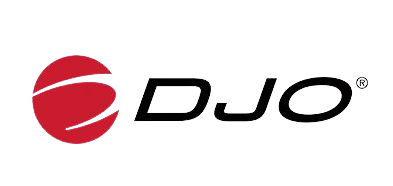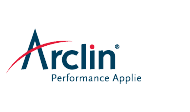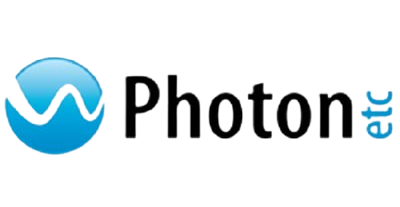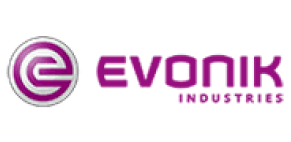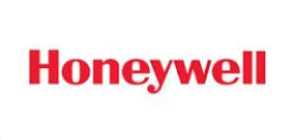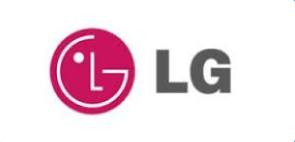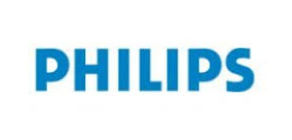The Global Paint Process Automation Market Size, Share & Growth Analysis By Offering (Hardware, Software, And Services), By Purpose (Interior, And Exterior), By Vertical (Automotive, Aviation, Agriculture, Textile, Furniture, Pharmaceutical, Electronics, Construction, And Others), By Type (Floor-Mounted Systems, Wall-Mounted Systems, Rail-Mounted Systems, And Others), And Regional Forecast, 2021-2027, This research & consulting report doles out information about the global Paint Process Automation market. The forecast period of the market extends till 2027, while commencing in 2020. The report sheds light on various key insights & trends that have occupied center stage & drawn the attention of end-users. The Paint Process Automation industry is witnessing impressive expansion at present, having logged double digit CAGRs in the past.
The global paint process automation market size was valued at $3.34 billion in 2020, and is projected to reach $8.22 billion by 2027, registering a CAGR of 10.7% from 2021 to 2027.
The report alludes to the Paint Process Automation market as a lucrative sector. This sector is slated to generate substantial revenues during forecast period 2021 to 2027. The analytical report highlights data & overview regarding the size, shares, & demand of Paint Process Automation. Several other factors have had a positive or negative impact on the industry, all of which have been laid out in details.
The said factors comprise drivers, novel prospects, hindrances, and other vital characteristics of the market. Investments by rivals into Paint Process Automation products have catapulted the market into limelight & have stoked its demand, globally.
Few among other key aspects that find a mention; encompass the industry segments, predictions, & size and shares for 2021 to 2027. Besides these; the report narrows down on the innovative trends & technological developments, expansion strategies of key players, and regional statistics.
The manner in which nascent & local competitors stack up against prominent players, hogs the spotlight. Novel products & services, coupled with the monetary shares of eminent competitors and the SWOT analysis unveil the complexities of the global industry size.
This report forecasts revenue growth at the global, regional, and country levels and provides an analysis of the latest industry trends from 2021 to 2027 in each of the sub segments. For the purpose of this study, Eternity Insights has segmented the global Paint Process Automation market on the basis of offering, purpose, vertical, type and region:
Research methodology is an integral component of any kind of high-level market research. It entails evaluation by expert panels, research on secondary & primary levels, checks on quality, & testing on completion. Secondary research deeply focuses on the whys, whos, wheres, whens, & hows and caters to answering the strictly consumer-centric base of people.
Some other secondary research sources comprise governmental affiliations & blogs, business magazines, and industrial journals. Primary research includes face-to-face & telephonic interviews with industry experts. It is comparatively more detailed & lays stress on unprejudiced opinions about the products & services.
Primary research findings cement secondary research & help end-users & businesses get a better hang of various markets. It is a well-established fact, though, that research methodology is best implemented through the mixed execution of its aforementioned procedures.
What Does the Report Offer?
Other Vital Points That Are Covered
The market report also brings to light major opportunities and untapped geographies. It is more like a blend of customized research documents & conventional reports. Besides informing buyers about the pros & cons of direct and indirect sales channels, the analysis exhibits illustrations & graphical representations of industry growth and the innovative trends within the industry.
Chapter 1: Introduction
1.1. Report description
1.2. Key benefits for stakeholders
1.3. Key market segments
1.4. Research methodology
1.4.1. Primary research
1.4.2. Secondary research
1.4.3. Analyst tools and models
Chapter 2: Executive summary
2.1. Key findings
2.1.1. Top impacting factors
2.1.2. Top investment pockets
2.2. CXO perspective
Chapter 3: MARKET OVERVIEW
3.1. Market definition and scope
3.2. Key forces shaping paint process automation market
3.4. Market dynamics
3.4.1. Drivers
3.4.1.1. Paint process automation offers consistent results
3.4.1.2. Cost-effective painting process
3.4.1.3. Paint process automation meets industry-specific needs
3.4.2. Restraint
3.4.2.1. High installation cost
3.4.3. Opportunities
3.4.3.1. Integration of advanced technologies with painting robots
3.4.3.2. Paint process automation is a step toward sustainability
3.5. COVID-19 impact analysis on the paint process automation market
3.5.1. Impact on market size
3.5.2. End user trends, preferences, and budget impact
3.5.3. Key player strategy
3.5.3.1. Limited investments for R&D
3.5.3.2. Focus on next-generation products
3.5.3.3. Shift toward agile supply chain model
3.5.4. Opportunity window due to COVID-19 outbreak
3.5.5. Economic impact
3.6. Market share analysis
3.7. Value chain analysis
3.8. Pricing analysis
Chapter 4: PAINT PROCESS AUTOMATION MARKET, BY offering
4.1. Overview
4.2. Hardware
4.2.1. Key market trends, growth factors, and opportunities
4.2.2. Robots
4.2.2.1.4-axis
4.2.2.2.6-axis
4.2.2.3.7-axis
4.2.2.4. Others
4.2.3. Controllers
4.2.4. Atomizers
4.2.5. Others
4.2.6. Market size and forecast, by region
4.2.7. Market analysis, by country
4.3. Software
4.3.1. Key market trends, growth factors, and opportunities
4.3.2. Market size and forecast, by region
4.3.3. Market analysis, by country
4.4. Services
4.4.1. Key market trends, growth factors, and opportunities
4.4.2. Market size and forecast, by region
4.4.3. Market analysis, by country
Chapter 5: PAINT PROCESS AUTOMATION MARKET, BY purpose
5.1. Overview
5.2. Interior
5.2.1. Key market trends, growth factors, and opportunities
5.2.2. Market size and forecast, by region
5.2.3. Market analysis, by country
5.3. Exterior
5.3.1. Key market trends, growth factors, and opportunities
5.3.2. Market size and forecast, by region
5.3.3. Market analysis, by country
Chapter 6: PAINT PROCESS AUTOMATION MARKET, BY vertical
6.1. Overview
6.2. Automotive
6.2.1. Key market trends, growth factors, and opportunities
6.2.2. Market size and forecast, by region
6.2.3. Market analysis, by country
6.3. Aviation
6.3.1. Key market trends, growth factors, and opportunities
6.3.2. Market size and forecast, by region
6.3.3. Market analysis, by country
6.4. Agriculture
6.4.1. Key market trends, growth factors, and opportunities
6.4.2. Market size and forecast, by region
6.4.3. Market analysis, by country
6.5. Textile
6.5.1. Key market trends, growth factors, and opportunities
6.5.2. Market size and forecast, by region
6.5.3. Market analysis, by country
6.6. Furniture
6.6.1. Key market trends, growth factors, and opportunities
6.6.2. Market size and forecast, by region
6.6.3. Market analysis, by country
6.7. Pharmaceutical
6.7.1. Key market trends, growth factors, and opportunities
6.7.2. Market size and forecast, by region
6.7.3. Market analysis, by country
6.8. Electronics
6.8.1. Key market trends, growth factors, and opportunities
6.8.2. Market size and forecast, by region
6.8.3. Market analysis, by country
6.9. Construction
6.9.1. Key market trends, growth factors, and opportunities
6.9.2. Market size and forecast, by region
6.9.3. Market analysis, by country
6.10. Others
6.10.1. Key market trends, growth factors, and opportunities
6.10.2. Market size and forecast, by region
6.10.3. Market analysis, by country
Chapter 7: PAINT PROCESS AUTOMATION MARKET, BY type
7.1. Overview
7.2. Floor-mounted painting robots
7.2.1. Key market trends, growth factors, and opportunities
7.2.2. Market size and forecast, by region
7.2.3. Market analysis, by country
7.3. Wall-mounted painting robots
7.3.1. Key market trends, growth factors, and opportunities
7.3.2. Market size and forecast, by region
7.3.3. Market analysis, by country
7.4. Rail-mounted painting robots
7.4.1. Key market trends, growth factors, and opportunities.
7.4.2. Market size and forecast, by region
7.4.3. Market analysis, by country
7.5. Others
7.5.1. Key market trends, growth factors, and opportunities
7.5.2. Market size and forecast, by region
7.5.3. Market analysis, by country
Chapter 8: PAINT PROCESS AUTOMATION MARKET, BY Region
8.1. Overview
8.2. North America
8.2.1. Key market trends, growth factors, and opportunities
8.2.2. Market size and forecast, by offering
8.2.3. Market size and forecast, by purpose
8.2.4. Market size and forecast, by vertical
8.2.5. Market size and forecast, by type
8.2.6. Market analysis, by country
8.2.6.1.U.S.
8.2.6.1.1. Market size and forecast, by offering
8.2.6.1.2. Market size and forecast, by purpose
8.2.6.1.3. Market size and forecast, by vertical
8.2.6.1.4. Market size and forecast, by type
8.2.6.2.Canada
8.2.6.2.1. Market size and forecast, by offering
8.2.6.2.2. Market size and forecast, by purpose
8.2.6.2.3. Market size and forecast, by vertical
8.2.6.2.4. Market size and forecast, by type
8.2.6.3.Mexico
8.2.6.3.1. Market size and forecast, by offering
8.2.6.3.2. Market size and forecast, by purpose
8.2.6.3.3. Market size and forecast, by vertical
8.2.6.3.4. Market size and forecast, by type
8.3.Europe
8.3.1. Key market trends, growth factors, and opportunities
8.3.2. Market size and forecast, by offering
8.3.3. Market size and forecast, by purpose
8.3.4. Market size and forecast, by vertical
8.3.5. Market size and forecast, by type
8.3.6. Market analysis, by country
8.3.6.1.UK
8.3.6.1.1. Market size and forecast, by offering
8.3.6.1.2. Market size and forecast, by purpose
8.3.6.1.3. Market size and forecast, by vertical
8.3.6.1.4. Market size and forecast, by type
8.3.6.2.Germany
8.3.6.2.1. Market size and forecast, by offering
8.3.6.2.2. Market size and forecast, by purpose
8.3.6.2.3. Market size and forecast, by vertical
8.3.6.2.4. Market size and forecast, by type
8.3.6.3.Italy
8.3.6.3.1. Market size and forecast, by offering
8.3.6.3.2. Market size and forecast, by purpose
8.3.6.3.3. Market size and forecast, by vertical
8.3.6.3.4. Market size and forecast, by type
8.3.6.4.France
8.3.6.4.1. Market size and forecast, by offering
8.3.6.4.2. Market size and forecast, by purpose
8.3.6.4.3. Market size and forecast, by vertical
8.3.6.4.4. Market size and forecast, by type
8.3.6.5.Rest of Europe
8.3.6.5.1. Market size and forecast, by offering
8.3.6.5.2. Market size and forecast, by purpose
8.3.6.5.3. Market size and forecast, by vertical
8.3.6.5.4. Market size and forecast, by type
8.4.Asia-Pacific
8.4.1. Key market trends, growth factors, and opportunities
8.4.2. Market size and forecast, by offering
8.4.3. Market size and forecast, by purpose
8.4.4. Market size and forecast, by vertical
8.4.5. Market size and forecast, by type
8.4.6. Market analysis, by country
8.4.6.1.China
8.4.6.1.1. Market size and forecast, by offering
8.4.6.1.2. Market size and forecast, by purpose
8.4.6.1.3. Market size and forecast, by vertical
8.4.6.1.4. Market size and forecast, by type
8.4.6.2.Japan
8.4.6.2.1. Market size and forecast, by offering
8.4.6.2.2. Market size and forecast, by purpose
8.4.6.2.3. Market size and forecast, by vertical
8.4.6.2.3.1. Market size and forecast, by type
8.4.6.3.India
8.4.6.3.1. Market size and forecast, by offering
8.4.6.3.2. Market size and forecast, by purpose
8.4.6.3.3. Market size and forecast, by vertical
8.4.6.3.4. Market size and forecast, by type
8.4.6.4.South Korea
8.4.6.4.1. Market size and forecast, by offering
8.4.6.4.2. Market size and forecast, by purpose
8.4.6.4.3. Market size and forecast, by vertical
8.4.6.4.4. Market size and forecast, by type
8.4.6.5.Rest of Asia-Pacific
8.4.6.5.1. Market size and forecast, by offering
8.4.6.5.2. Market size and forecast, by purpose
8.4.6.5.3. Market size and forecast, by vertical
8.4.6.5.4. Market size and forecast, by type
8.5.LAMEA
8.5.1. Key market trends, growth factors, and opportunities
8.5.2. Market size and forecast, by offering
8.5.3. Market size and forecast, by purpose
8.5.4. Market size and forecast, by vertical
8.5.5. Market size and forecast, by type
8.5.6. Market analysis, by country
8.5.6.1.Latin America
8.5.6.1.1. Market size and forecast, by offering
8.5.6.1.2. Market size and forecast, by purpose
8.5.6.1.3. Market size and forecast, by vertical
8.5.6.1.4. Market size and forecast, by type
8.5.6.2.Middle East
8.5.6.2.1. Market size and forecast, by offering
8.5.6.2.2. Market size and forecast, by purpose
8.5.6.2.3. Market size and forecast, by vertical
8.5.6.2.4. Market size and forecast, by type
8.5.6.3.Africa
8.5.6.3.1. Market size and forecast, by offering
8.5.6.3.2. Market size and forecast, by purpose
8.5.6.3.3. Market size and forecast, by vertical
8.5.6.3.4. Market size and forecast, by type
Chapter 9: COMPETITIVE LANDSCAPE
9.1.Introduction
9.1.1. Key player positioning, 2020
9.2.Competitive dashboard
9.3.Competitive heatmap
9.4.Product mapping
9.5.Top winning strategies
9.5.1.Top winning strategies, by year
9.5.2.Top winning strategies, by development
9.5.3.Top winning strategies, by company
Chapter 10:Company profiles
10.1.ABB Ltd.
10.1.1.Company overview
10.1.2. Key executives
10.1.3.Company snapshot
10.1.4.Operating business segments
10.1.5.Product portfolio
10.1.6.R&D expenditure
10.1.7.Business performance
10.1.8. Key strategic moves and developments
10.2.CMA Robotics Spa
10.2.1.Company overview
10.2.2. Key executives
10.2.3.Company snapshot
10.2.4.Operating business segments
10.2.5.Product portfolio
10.2.6.Business performance
10.3.Durr AG
10.3.1.Company overview
10.3.2. Key executives
10.3.3.Company snapshot
10.3.4.Operating business segments
10.3.5.Product portfolio
10.3.6.R&D expenditure
10.3.7.Business performance
10.3.8. Key strategic moves and developments
10.4. EPISTOLIO Srl
10.4.1. Company overview
10.4.2. Key executives
10.4.3. Company snapshot
10.4.4. Operating business segments
10.4.5. Product portfolio
10.4.6. Business performance
10.5. FANUC Corporation
10.5.1. Company overview
10.5.2. Key executives
10.5.3. Company snapshot
10.5.4. Operating business segments
10.5.5. Product portfolio
10.5.6. Business performance
10.5.7. Key strategic moves and developments
10.6. Graco Inc.
10.6.1. Company overview
10.6.2. Key executives
10.6.3. Company snapshot
10.6.4. Operating business segments
10.6.5. Product portfolio
10.6.6. Business performance
10.7. Kawasaki Heavy Industries, Ltd.
10.7.1. Company overview
10.7.2. Key executives
10.7.3. Company snapshot
10.7.4. Operating business segments
10.7.5. Product portfolio
10.7.6. R&D expenditure
10.7.7. Business performance
10.7.8. Key strategic moves and developments
10.8. KUKA AG
10.8.1. Company overview
10.8.2. Key executives
10.8.3. Company snapshot
10.8.4. Operating business segments
10.8.5. Product portfolio
10.8.6. R&D expenditure
10.8.7. Business performance
10.8.8. Key strategic moves and developments
10.9. Staubli International AG
10.9.1. Company overview
10.9.2. Key executives
10.9.3. Company snapshot
10.9.4. Operating business segments
10.9.5. Product portfolio
10.10. YASKAWA Electric Corporation
10.10.1. Company overview
10.10.2. Key executives
10.10.3. Company snapshot
10.10.4. Operating business segments
10.10.5. Product portfolio
10.10.6. R&D expenditure
10.10.7. Business performance
10.10.8. Key strategic moves and developments
To ensure high-level data integrity, accurate analysis, and impeccable forecasts
For complete satisfaction
On-demand customization of scope of the report to exactly meet your needs
Targeted market view to provide pertinent information and save time of readers
A faster and efficient way to cater to the needs with continuous iteration


Focus on Data Accuracy & Reliability

75+ Clients in Fortune 500

All your transactions are secured end-to-end, ensuring a satisfactory purchase

Ensure the best and affordable pricing
